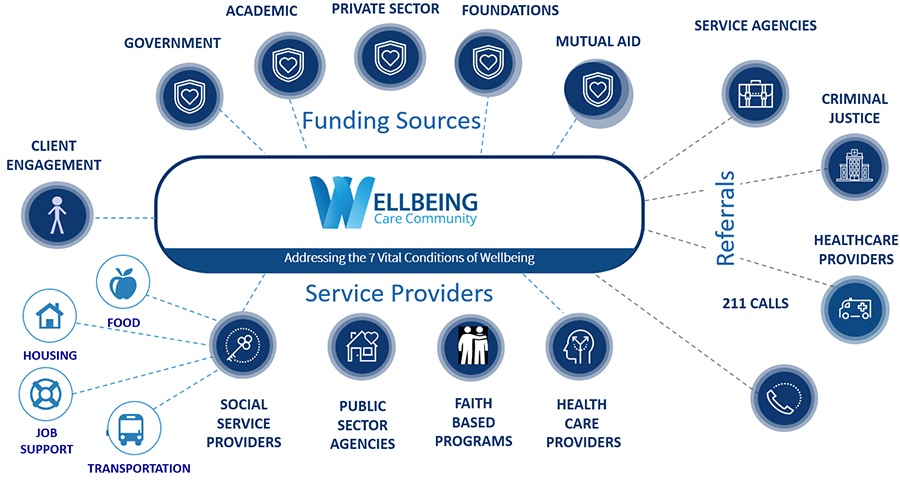Wellbeing Care Community System Care Coordination

Benefits of Using the Wellbeing Care Community Care Coordination System
- Establish Standardized Processes
- Standardize the intake procedure across all partners
- Unify and simplify more operations across organizations
- Provide Collaborative Data Sharing
- Move away from the traditional siloed data approach
- Share accurate data with partners at the right time to improve outcomes
- Increase Client Engagement
- Direct contact with clients through web portal, mobile app, and SMS texting
- Communicate, perform assessments and educate remotely
- Improve Community Coordination
- Close the gap on and track outcomes of referrals with CBOs and engaged community partners
- Simplify Tracking and Reporting Metrics, Detailed Data Analysis
- Identify and create data points for meeting grant requirements
- Drill down to identify and address negative trends or events
What Care Coordination Functions are Supported by the WCC System?
Supported Functions:
- Build and manage a directory of available community resources and programs
- Build and utilize unlimited assessments to collect data - choose from standard pre-built assessments or build your own
- Build and manage personal success pathways to help individuals achieve specific goals and outcomes using evidence-based protocols
- Integrate with mobile phones and tablet devices – supporting the ability to enter data and access critical information and supporting video visits (telehealth)
- Capture data from multiple sources to track pathway progress and generate alerts when progress stalls.
- Interface with other internal and community information systems using the built-in proven data integration engine that has been in production for 15 years
- Design and automate functional workflows using the built-in rules engine
- Analyze and display data using customizable dashboards and reports
- Project data security and privacy using built-in role-based security and personal consent management (supports both HIPAA healthcare privacy requirements and 42 CFR mental/ behavioral health and substance use disorder privacy requirements)

Copyright © 2010-2025. eTransX, Inc. All rights reserved. | Privacy Policy
